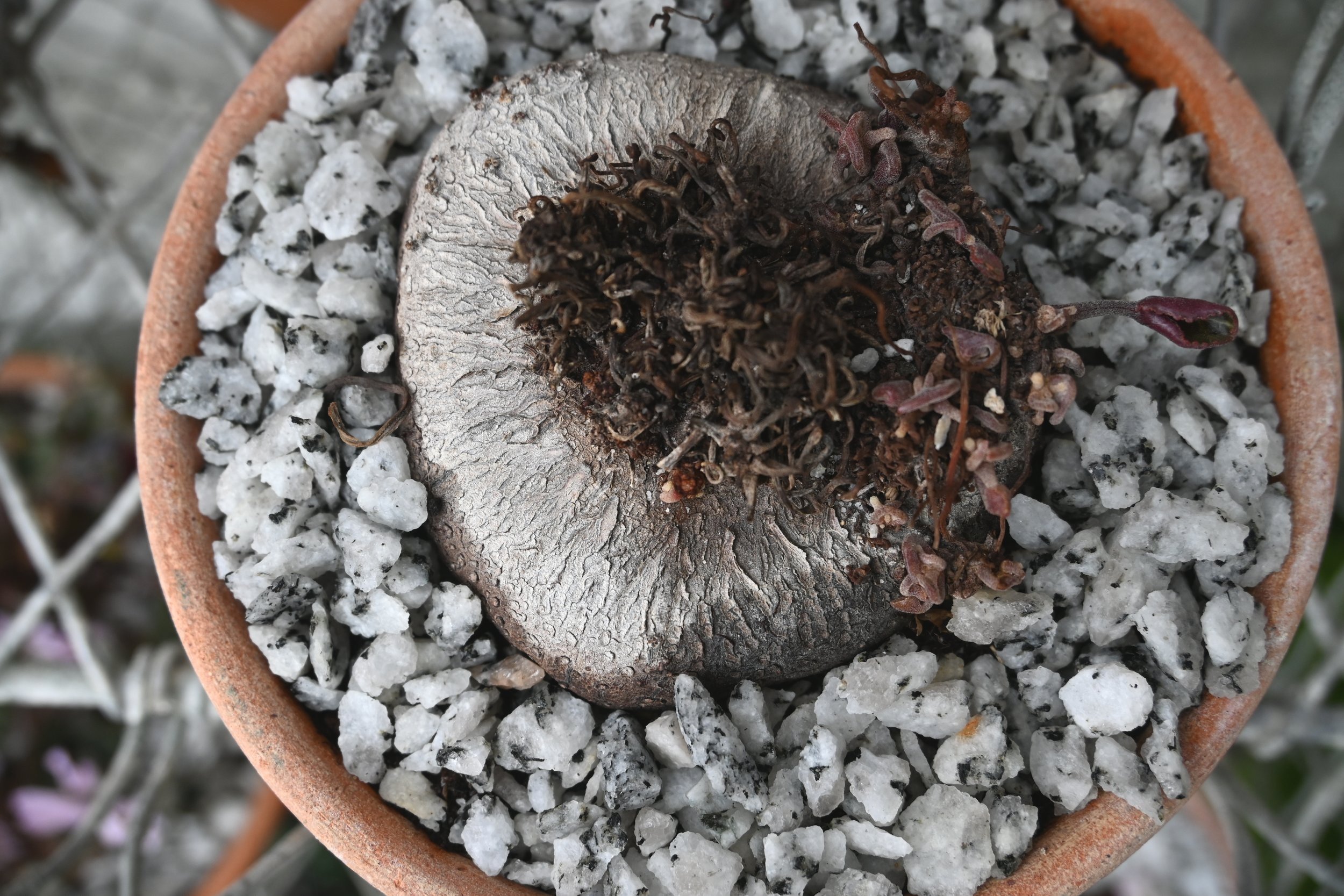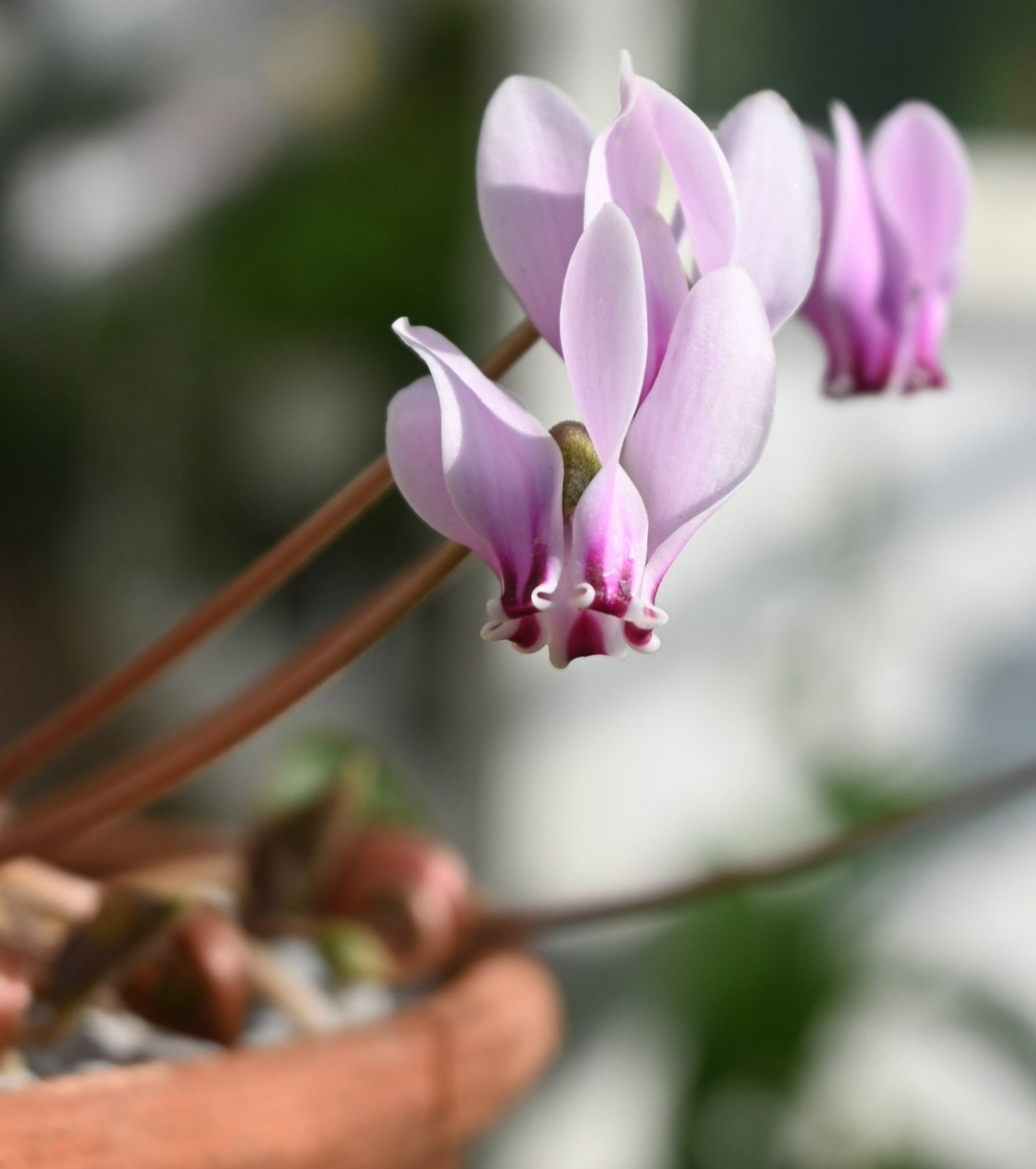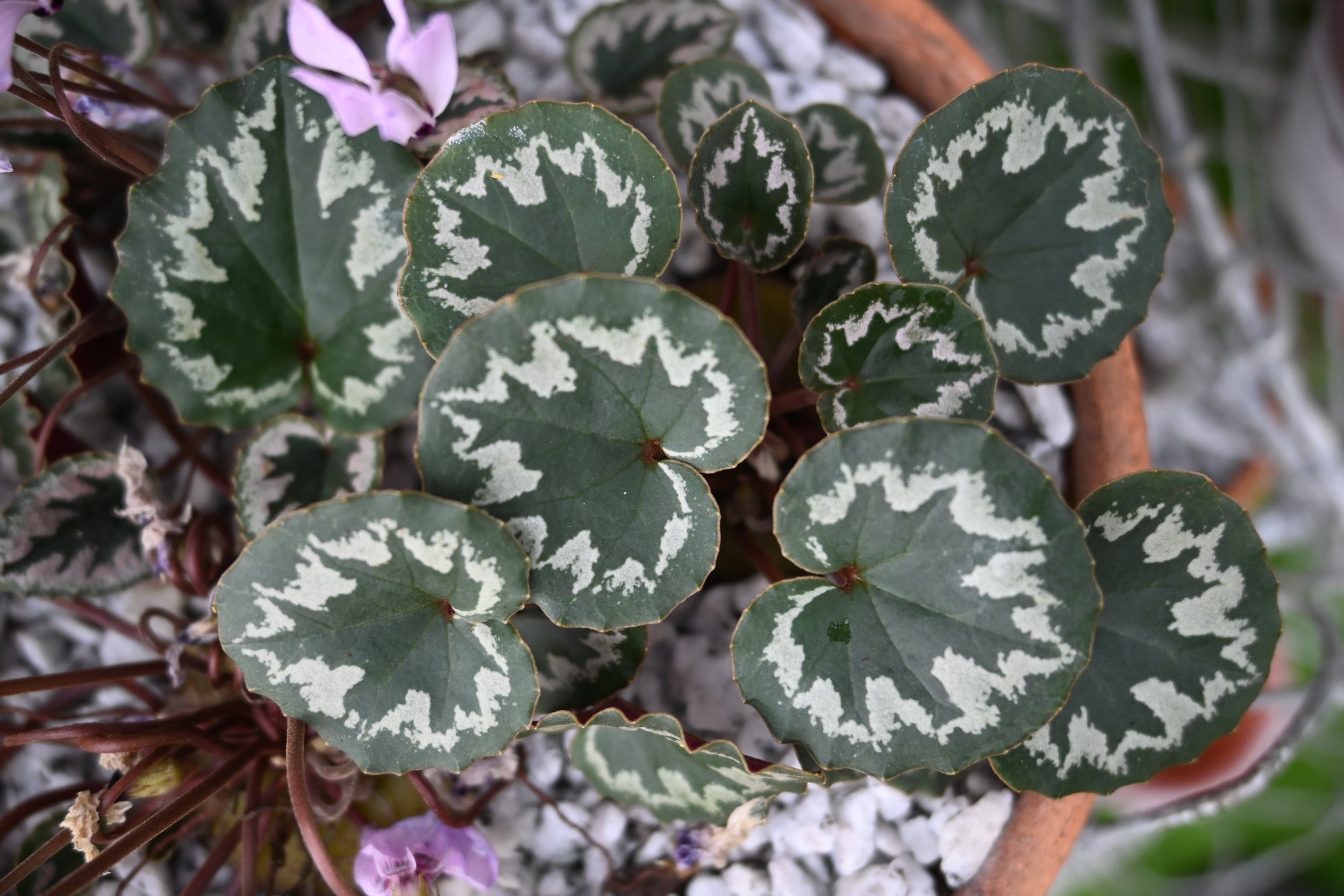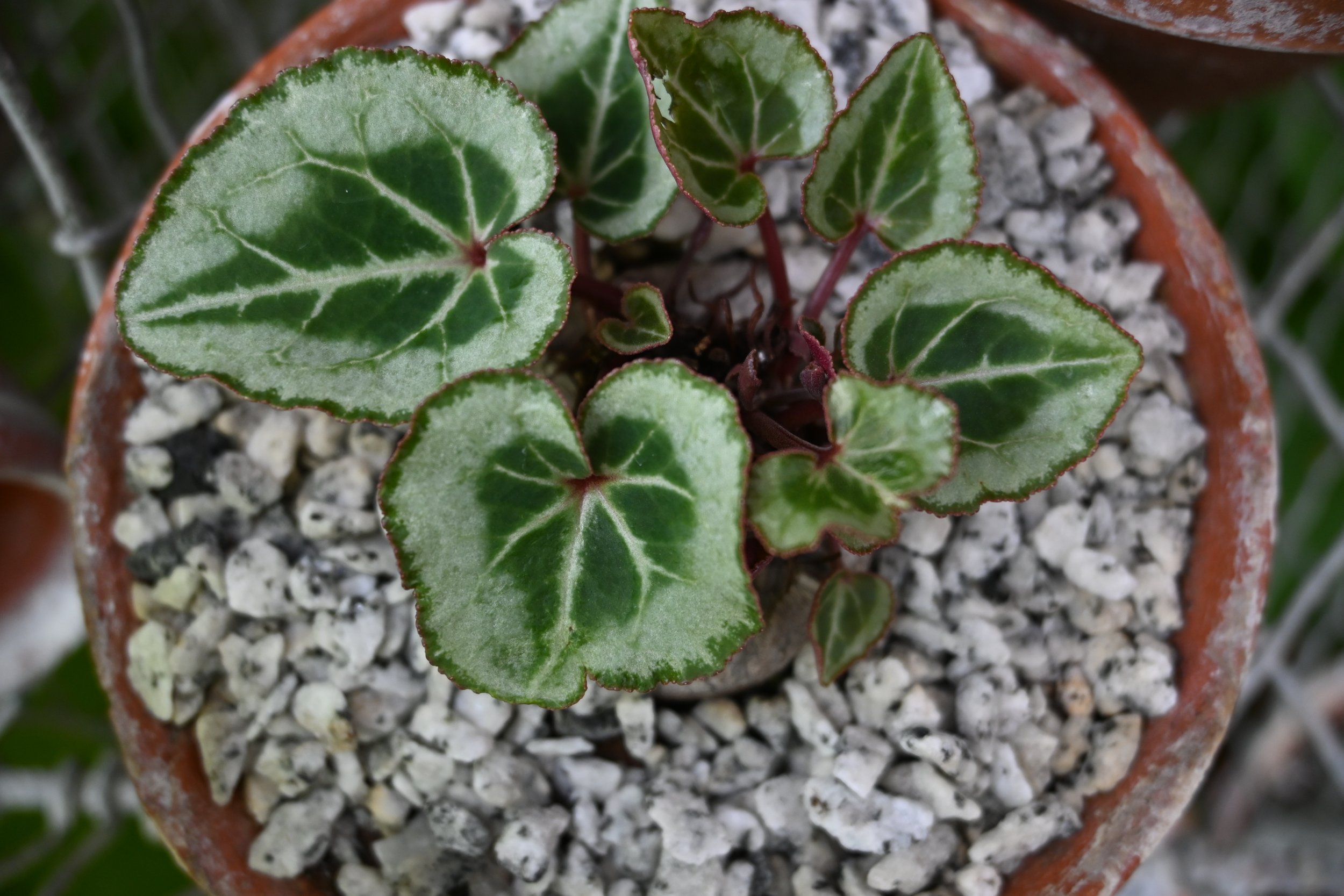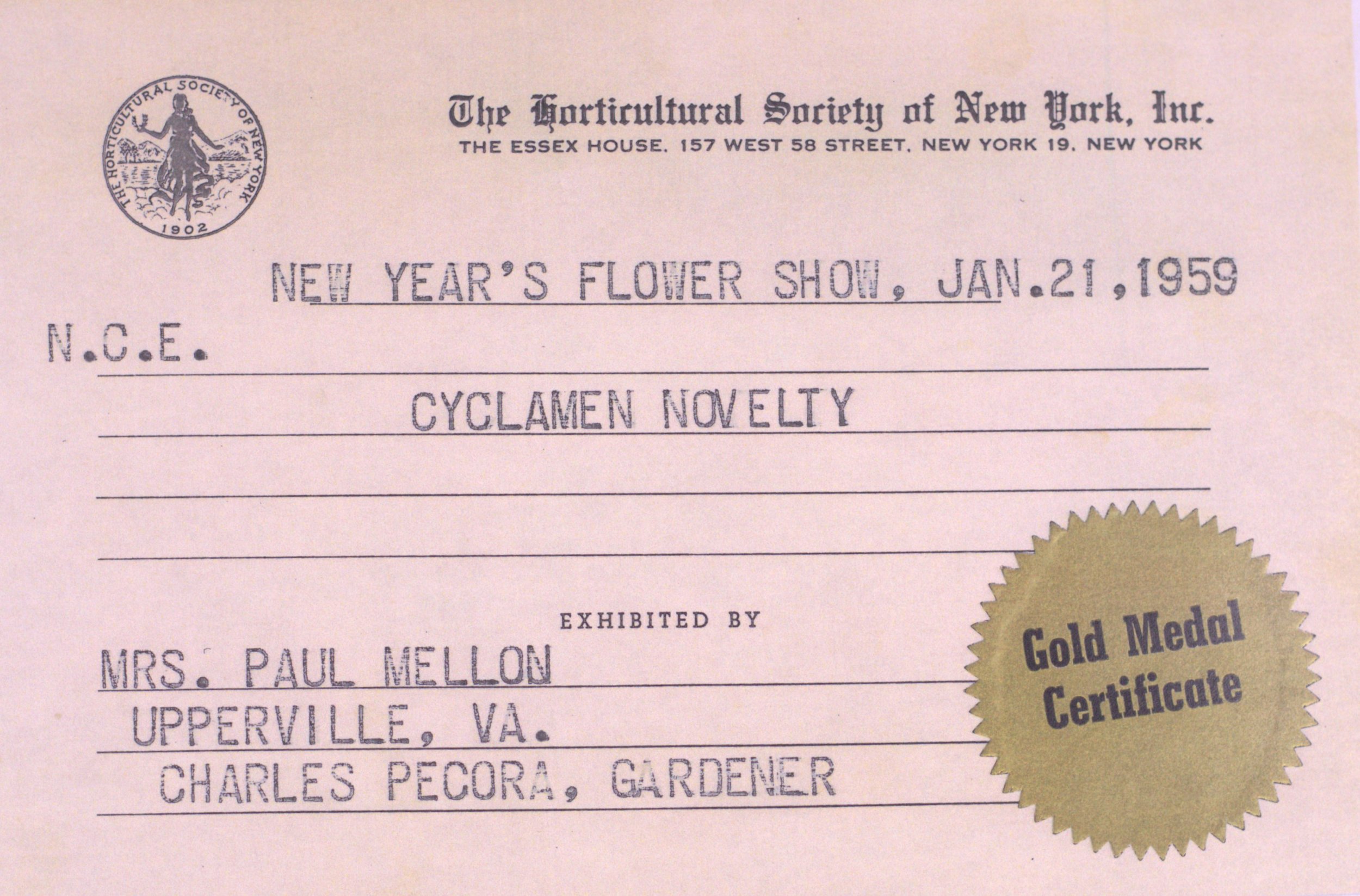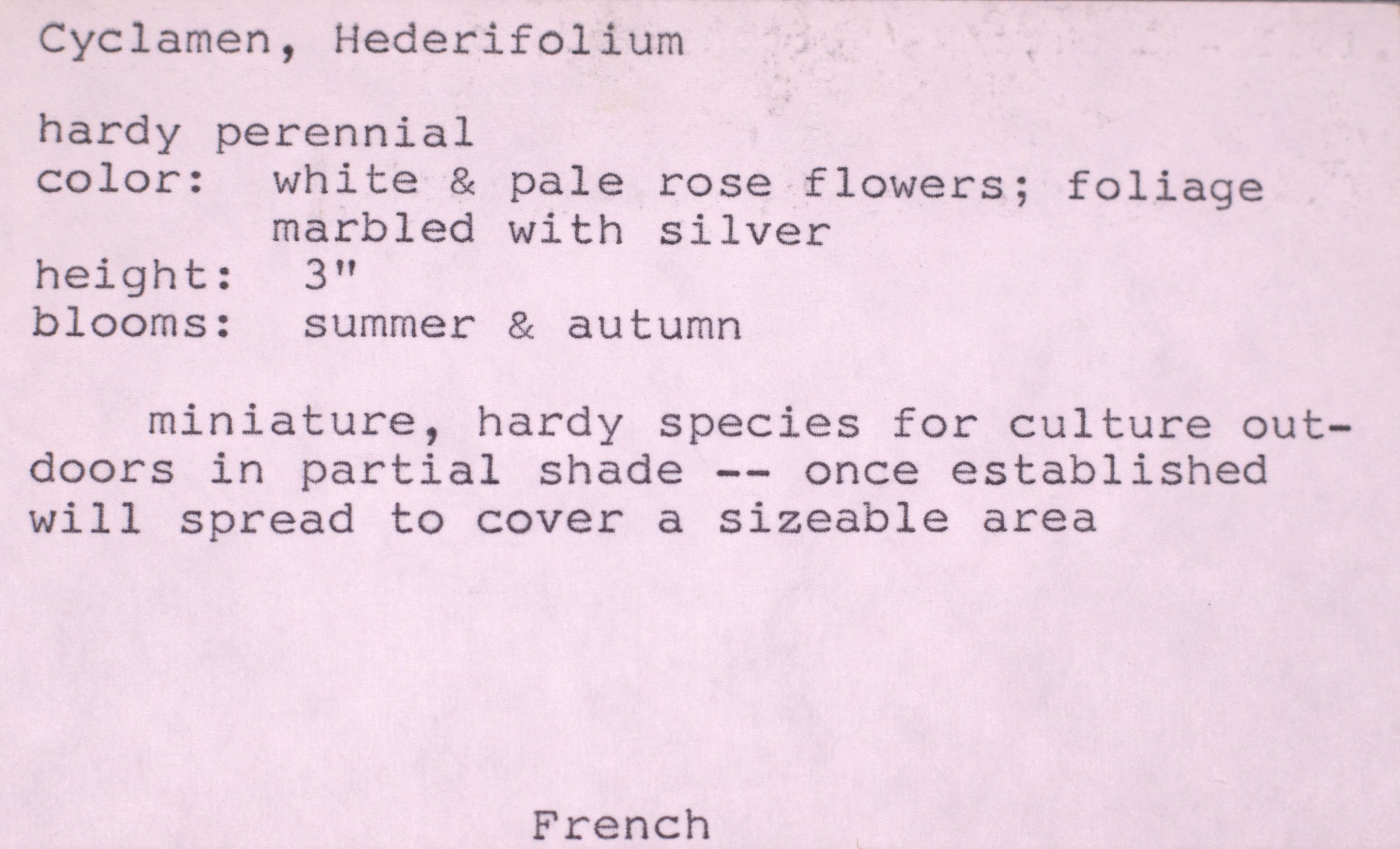Autumn Appreciation: Cyclamen
OSGF
The color palette often associated with autumn is teeming with reds, yellows, and oranges as the deciduous trees of the landscape transition into dormancy. But as our gardeners put the beds of Bunny Mellon’s gardens to sleep, it’s just the beginning for the wide and vibrant palettes on display in the Formal Greenhouse which include one of Mellon’s favorite flowers: cyclamen.
Cyclamen hederifolium in the Walled Garden.
Cyclamen have existed since around the time Theophrastus. However, early taxonomic descriptions were varied and unreliable due to the lack of herbarium material available. Significant improvements were made in 1768 when avid gardener Philip Miller successfully described six species in cultivation in his reference series, The Gardeners Dictionary. These distinct species were left unchanged for more than a century, only to be revisited in 1868 when four additional species were added to the genus. Today, there are 23 species in the genus all housed in the Primrose family (Primulaceae). The majority of their native range is concentrated in the landscapes of Southeastern Europe and in Turkey, Iran, and Algeria.
There are countless cultivars, varieties, and mixes widely available for cultivation. Most popular of which being Cyclamen persicum (florist’s cyclamen) which has been bred countlessly to produce the large and bright flowers we see unveiled in grocery stores around the winter months.
More often than not, most people associate perennial geophytes with spring species like daffodils or hyacinth. However, unlike these popular seasonal plants, which hold their stores in bulbs, cyclamen emerge from tubers. Tubers, which are modified stems, range in size and age. The largest cyclamen tuber ever recorded weighed in at roughly 40 pounds (18kg) and with a circumference of around 39 inches (99 cm). As they mature, their texture can vary widely with young tubers keeping their globe shape but flattening and expanding- like a pancake as time progresses.
Flowering cycles range from late summer into autumn, mid-winter and through into spring. Regardless of the time, flowers emerge on singular pedicles (the stalk of a single flower) and vary greatly in color depending on the species. Some are soft pink, others a stark magenta that fades throughout the season, while others emerge as cool whites. Another distinctive feature of cyclamen is the nodding habit of the flowers that some gardeners equate to fairy wings. Fragrance of the blooms varies species to species yet many of the garden cultivated varieties have a slight sweet scent.
Leaves, like the cyclamen flowers, also vary greatly but have a showy mosaic of marbled green and silver. Some leaves are heart shaped while others have a more distinct geometric structure. Crouching down in the garden, you can investigate the leaves' undersides which are often a deep mauve color. The timing of leaf emergence is somewhat varied as well, as some mature before flowering while others the reverse is true. The majority of the Cyclamens native range is concentrated in the landscapes of Southeastern Europe and in Turkey, Iran, and Algeria. In those climates, the tubers remain dormant until cooler temperatures and the autumn rains signal their emergence.
As we’ve seen so far, cyclamen exhibit immense diversity both in foliage and flowers. It was with this in mind that Mrs. Mellon placed orders for several cyclamen species to be grown in both the Walled Garden and the Formal Glasshouse. She also submitted several of her cyclamen to the International Garden Show in New York from 1958 to 1960. It was her intention that even as the light of summer faded and dormancy set in for much of the Eastern Hemisphere, a bright pocket of color and interest would shine on. Only when the warmer temperatures arrive and the brighter days set in do these subtle beauties take their cue and wait again for the first autumn rains.
Interested in learning more about fall and spring geophytes?
Register now for our one-day Unusual Bulbs workshop on Saturday, January 21st, 2023 by clicking here.
Special thanks to Head Gardener Todd Lloyd, Head Librarian Tony Willis, and Nancy Collins, Assistant Librarian and Archivist for their help with this blog post.
Banner image: Stones, Margaret Elsie. Cyclamen cilicium var. intaminatum Cyclamen cilicium var. cilicium. 1979.


